Hello, riders! Let’s talk about driving safety for a moment, shall we? You know what they say – safety first, always. That’s why wearing a helmet while riding is one of the best things you can do to ensure you stay safe on the road.
Did you know that helmets were originally designed for use in military combat and sports before being adopted for use in motorcycling and other motorized sports? Nowadays, helmets are a legal requirement for motorcyclists in most countries including India, and for good reason: they have been shown to significantly reduce the risk of head injuries and fatalities in the event of an accident.
So what are the other benefits of wearing a helmet? What are some more reasons to wear a helmet while driving? Well, my friend, there are plenty of advantages. Let’s take a closer look at a few of them.
Table of Contents
What Are The Benefits Of Wearing A Helmet While Driving?
A. Protection From Head Injuries
The biggest benefit of wearing a helmet that everyone knows is the protection from head injuries as head injuries are the leading cause of death in motorcycle crashes.
If you don’t use a helmet, you are at risk of several types of head injuries that can occur in a motor vehicle accident, including skull fractures, concussions, and traumatic brain injuries. These injuries can be fatal for you or can result in long-term or short-term disabilities.
Helmets can protect you from all these risks as they’re specifically designed to protect the head and brain in the event of an accident. You might have observed that helmets are made from a hard outer shell and a softer inner layer that is designed to absorb impact. Therefore it can significantly reduce the risk of head injuries and fatalities by more than 69%.
B. Better Range Of Visibility And Hearing
Another biggest reason to wear a helmet is that it not only protects your head from injuries but also offers a range of other benefits. They let you enjoy your rides and push your bike to its limits. When you don’t wear a helmet, you will face a wind blast at higher speeds and would also risk insects and other particles hitting your face. Guess what? A helmet can rescue you from these problems easily. Not just this, it can also help in better visibility during harsh sunlight.
Moreover, helmets can also help you eliminate distractions like wind noise, which might hinder you from hearing horns and sirens. Thus your hearing ability is significantly enhanced by a helmet’s wind noise reduction, ensuring more safety for you on the road.
C. Protection From Weather And Environmental Factors
Do you know, a helmet can be your good friend during unfavorable weather too? Yes, you heard it right. As you know, while riding a motorcycle or other open-air vehicle, riders are exposed to the elements, including sun, wind, rain, and snow.
A good helmet can protect you from the above-mentioned elements and would help you stay comfortable and focused on the road. It can protect your face and especially your eyes from sun glare and wind. And helmets with built-in vents can provide ventilation to keep you cool in hot weather. So another reason to wear a helmet is to enjoy your rides a little more irrespective of the weather you are riding in.
D. Compliance With Laws And Regulations In India
Wearing a helmet while driving is recommended for safety reasons. However, it is also important to wear a helmet as it is a legal requirement in India. Under the Motor Vehicles Act of 1988, it is mandatory for all two-wheeler riders and pillion riders to wear a helmet while on the road. Here are some key aspects related to helmet laws in India that you should know:
Helmet Standards
Helmets worn by two-wheeler riders and pillion riders in India must comply with the standards set by the Bureau of Indian Standards (BIS). The BIS has set standards for helmets that include impact resistance, penetration resistance, retention system strength, and visibility. If you do not wear an ISI-certified helmet, you will have to pay a fine. Also, If your helmet strap is undone, you would also need to pay an additional fine. So make sure your helmet is ISI certified and you strap it properly while riding.
Penalties For Violating The Law
If you are riding and are caught without a helmet or your pillion not wearing a helmet, you can be fined as per the Motor Vehicles Act, of 1988. The first offense can attract a fine of ₹1,000, and subsequent offenses can result in higher fines and even suspension of your driving license.
Exceptions To The Helmet Law
There are some exceptions to the helmet law in India, such as Sikh riders wearing a turban are exempted from wearing a helmet while riding.
Importance Of Following Laws
You should not just comply with helmet laws to avoid fines and penalties but to ensure your safety as a rider and that of pillion riders. A helmet can be a life savior in the case of an unfortunate accident and you should not risk it.
Types Of Helmets Categorised Based On Level Of Safety
So fellow riders, now that you know that helmets are one of the most important pieces of gear you can invest in as a motorcycle enthusiast, let’s take a look at the different types of helmets based on how much safety they can provide you.
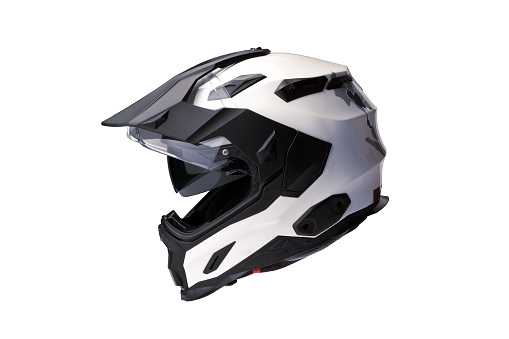
- First up, we have full-face helmets. These bad boys offer maximum coverage and protection, covering your entire head and face. They’re perfect for high-speed riding and provide top-notch protection against wind, debris, and impact. These types of helmets come highly recommended by us. You can get a good full-face helmet under ₹2000, and if your budget allows then you can also go for helmets under ₹5000.
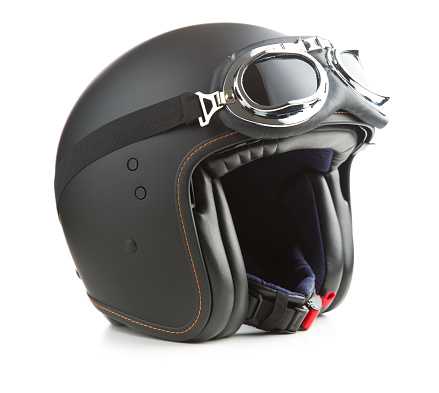
- Next, we have open-face helmets. These cover the top and back of your head, but leave your face exposed. They offer less protection than full-face helmets but provide better visibility and ventilation.
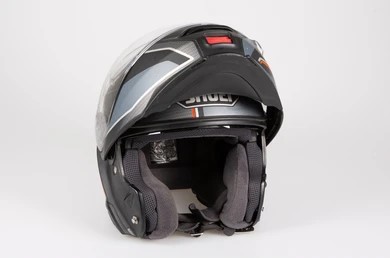
- Modular helmets are a combination of full-face and open-face helmets. They allow you to lift up the chin bar for increased ventilation and visibility, making them a popular choice for touring and commuting.
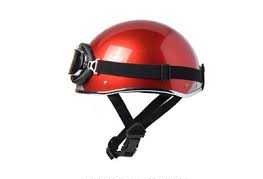
- Finally, we have half helmets, which cover only the top of your head. These are popular among cruiser riders but offer the least amount of protection in the event of an accident.
How To Choose The Right Helmet For Yourself To Get The Most Advantages?
Now that we’ve covered the different types of helmets, let me tell you how to choose the right one.
- First and foremost, make sure the helmet fits properly. You don’t want it to be too loose or too tight, as that can be uncomfortable and ineffective in the event of an accident. If your helmet is too loose, it might not stay on your head during an accident, and if it is too tight, it can be uncomfortable to wear. Therefore, always select a helmet that is comfortable, well-fitted, and compliant with safety standards. Be sure to measure your head and choose a helmet that fits comfortably but properly.
- You should always look for safety features when selecting a helmet. Helmets that have been tested and certified would provide you with effective protection in the event of an accident. Saving money on helmets and buying a non-certified helmet would not only attract a fine if you are caught by traffic police but can also endanger your life. As every rider needs a different type of helmet according to their need, you should choose the one which suits you the most.
- And last but not least, you should choose a comfortable helmet. This is simply because the more comfortable your helmet is it is, the more likely you are to wear it. You should always try to get a helmet that offers features like ventilation, moisture-wicking liners, and adjustable straps to ensure a comfortable fit for your head.
Should You Wear A Helmet While Riding?
Yes, you should definitely wear a helmet while riding. This is because there are many benefits of wearing a helmet while driving. It can provide you protection from head injuries. Not only this but it can help you reduce noise levels, can protect you from weather elements, and would make sure that you are not breaking any laws.
Wearing a helmet would not only give you added comfort and confidence, but it will also reduce any possible distractions by helping you focus your vision on the road and save yourself from any potential threat on the road.
You should always choose a high-quality helmet that meets the safety standards set by the ISI or ECE or Dot. This is simply because a well-fitted helmet that is comfortable to wear can make all the difference in case of an accident.
So there you have it, riders. By choosing the right helmet and wearing it every time you ride, you can enjoy your rides to the maximum. In doing this, you will not only protect yourself but also set an example for others to follow road safety. Stay safe and always wear a helmet! Happy riding!
FAQs
What Is The Most Important Benefit Of Wearing A Helmet?
The most important advantage of wearing a helmet is protection from face and head injuries while riding.
What Are The Good Qualities Of A Helmet?
Some important qualities and features of a good helmet are ISI certification, reflective material, sun visor, padding for comfort, and good build quality.
What Are The Disadvantages Of Not Wearing A Helmet?
Not wearing a helmet can cause a lot of possible injuries such as broken jaw, concussion, damage to brain, nervous shock, face disfigurement, damage to ears and eyes.

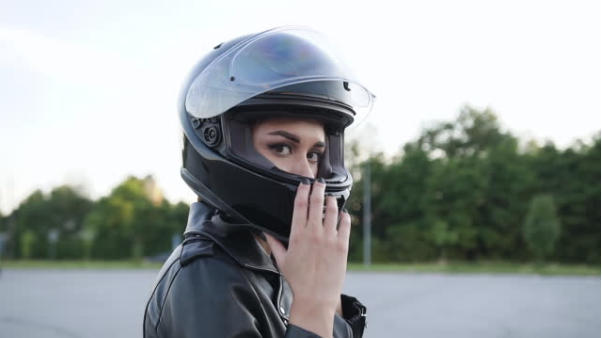
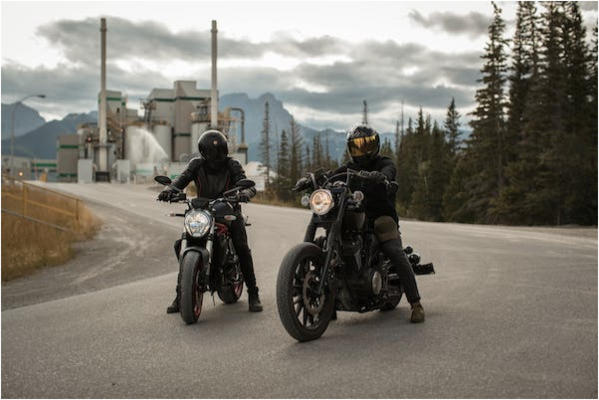


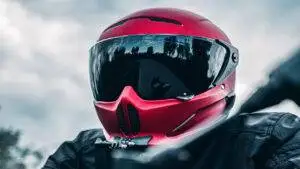


Pingback: Types Of Motorcycle Helmet Material - Shell, Visor, & Padding
Pingback: What Is Double D Ring Helmet Strap? How To Use It?
Pingback: 6 Different Types Of Motorcycle Helmets: Which One Is The Best?
Pingback: 6 Best Helmets Under 3000 With Graphics & Dual Visor